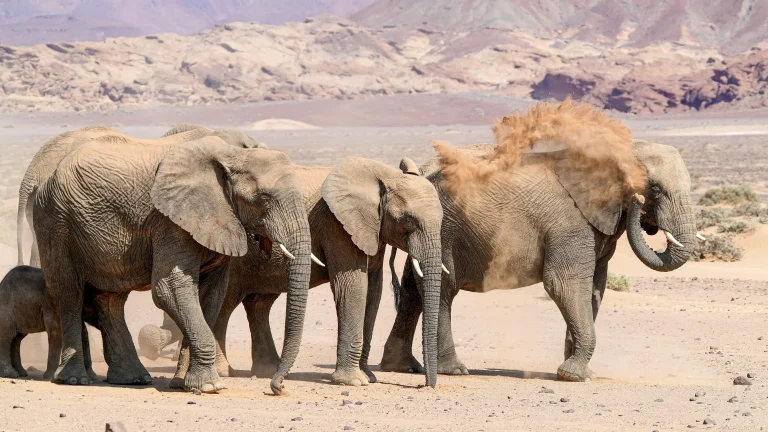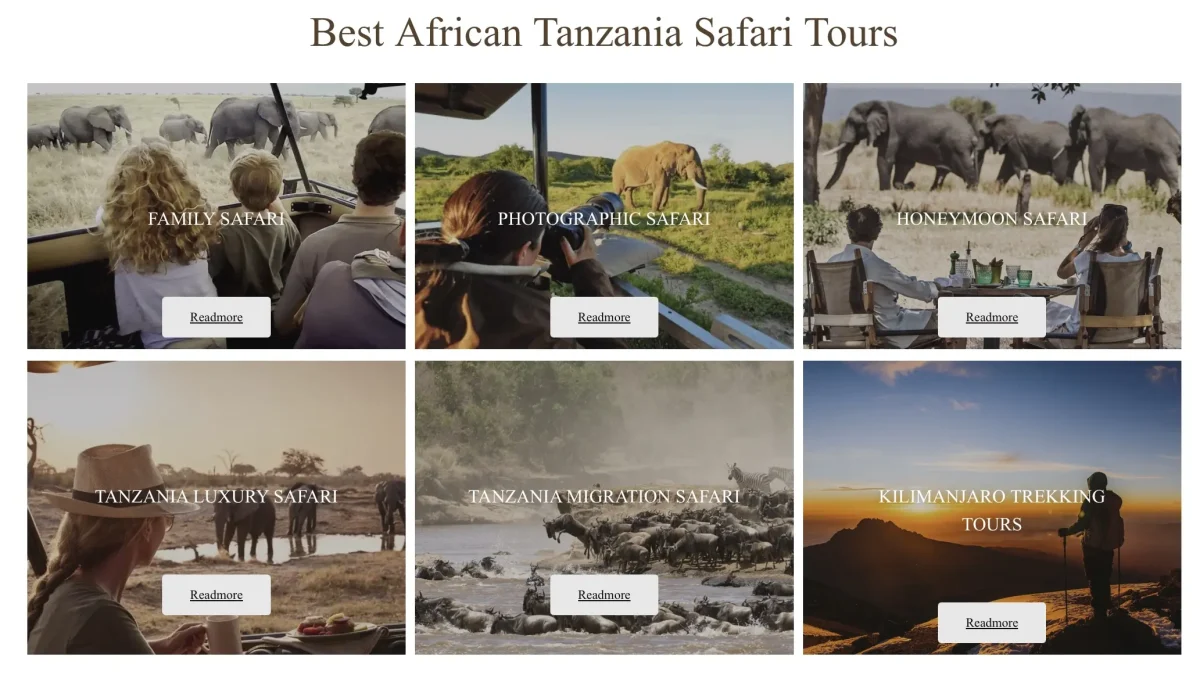Mar 06,2025
|273 Views
|5 mins read
|Top Tips for Planning Your Ultimate East Africa Safari

Top Tips for Planning Your Ultimate East Africa Safari:
Top Tips for Planning Your Ultimate East Africa Safari An East Africa safari is a dream adventure for many, offering unparalleled wildlife encounters, breathtaking landscapes, and rich cultural experiences. From the Great Migration in the Serengeti to gorilla trekking in Rwanda, the region is a treasure trove of natural wonders. However, planning a safari requires careful consideration to ensure a seamless and unforgettable experience. This guide covers everything you need to know to plan your ultimate East Africa safari.
👉 Click HERE to explore our exclusive packages!
1. Choose the Right Safari Destination
East Africa is home to several countries, each offering unique safari experiences. Here are some of the top destinations to consider:
Kenya
- Maasai Mara National Reserve: Famous for the Great Migration, where millions of wildebeest, zebras, and gazelles traverse the plains. It’s also a prime spot for spotting the Big Five (lions, leopards, elephants, rhinos, and buffalo).
- Amboseli National Park: Known for its large elephant herds and stunning views of Mount Kilimanjaro.
Tanzania
- Serengeti National Park: Synonymous with the Great Migration and one of the best places for game drives.
- Ngorongoro Crater: A UNESCO World Heritage Site and a haven for wildlife, including the Big Five.
- Lake Manyara National Park: A birdwatcher’s paradise, with flamingos and other bird species.
Uganda
- Bwindi Impenetrable Forest: Renowned for mountain gorilla trekking, offering a rare chance to observe these majestic creatures in their natural habitat.
- Murchison Falls National Park: Perfect for boat safaris and game drives.
Rwanda
- Volcanoes National Park: Another top destination for gorilla trekking, offering intimate encounters with mountain gorillas.
- Akagera National Park: A great spot for traditional game drives and wildlife viewing.
Zanzibar
- While not a traditional safari destination, Zanzibar is ideal for combining a safari with a beach holiday. Its pristine beaches and vibrant culture make it a perfect post-safari retreat.
2. Timing Your Safari: When to Go
The timing of your safari can significantly impact your experience. Consider the following seasons:
Dry Season (June to October)
- Best for Wildlife Viewing: Animals gather around water sources, making them easier to spot.
- Great Migration: Peak season in the Serengeti and Maasai Mara (July to October).
- Weather: Warm and sunny, with minimal rainfall.
Wet Season (November to May)
- Lush Landscapes: The scenery is vibrant and green, perfect for photography.
- Fewer Crowds: Lower tourist numbers and discounted rates.
- Birdwatching: Ideal for spotting migratory birds.
- Gorilla Trekking: Still accessible in Uganda and Rwanda.
3. Select Your Safari Activities
East Africa offers a variety of activities to suit different interests. Here are some top options:
Game Drives
- Explore national parks in open 4×4 vehicles with expert guides.
- Best for spotting the Big Five and other wildlife.
Gorilla Trekking
- A once-in-a-lifetime experience in Uganda or Rwanda.
- Trek through dense forests to observe mountain gorillas up close.
Walking Safaris
- Get closer to nature with guided walks through the bush.
- Learn about plants, animals, and ecosystems from knowledgeable rangers.
Birdwatching
- East Africa is a birdwatcher’s paradise, with over 1,000 species.
- Top spots include Lake Nakuru (Kenya) and Tarangire National Park (Tanzania).
Hot Air Balloon Safaris
- Enjoy breathtaking aerial views of the Serengeti or Maasai Mara.
- Perfect for photography enthusiasts.
4. Choose Your Accommodation
East Africa offers a range of lodging options to suit every budget and preference:
Luxury Lodges
- High-end lodges and tented camps with gourmet meals, private pools, and stunning views.
- Examples: Singita Serengeti (Tanzania) and Angama Mara (Kenya).
Mid-Range Lodges
- Comfortable accommodations with excellent service at reasonable prices.
- Examples: Kilimamoja Lodge (Tanzania) and The Mara Explorer Camp (Kenya).
Budget Camping
- Rustic campsites for a more immersive experience.
- Ideal for adventurous travelers seeking a closer connection to nature.
5. Plan Your Budget
Safari costs vary depending on your preferences. Here’s a breakdown:
- Accommodation: Budget camping (100–100–300/day), mid-range lodges (350–350–700/day), luxury lodges (800–800–2,000/day).
- Activities: Gorilla trekking permits (700–700–1,500/person), game drives (usually included in packages).
- Transport: Shared or private vehicles, depending on your budget.
- Additional Costs: Visas, park fees, tips, and flights.
6. Health and Safety Precautions
- Vaccinations: Check with your doctor for required vaccines (e.g., yellow fever, typhoid) and malaria prophylaxis.
- Travel Insurance: Essential for covering medical emergencies, trip cancellations, and unforeseen events.
- Packing: Include a first-aid kit, insect repellent, sunscreen, and rehydration salts.
7. Packing Essentials
- Clothing: Lightweight, neutral-colored clothing for blending in with the environment. Layering is key for varying temperatures.
- Footwear: Sturdy hiking boots for trekking and comfortable shoes for relaxing.
- Gear: Binoculars, a high-quality camera, and extra memory cards.
- Miscellaneous: A reusable water bottle, power bank, and travel adapter.
8. Incorporate Cultural Experiences
East Africa’s rich cultural heritage adds depth to your safari. Consider these activities:
- Visit a Maasai village in Kenya or Tanzania to learn about traditional customs.
- Explore Stone Town in Zanzibar, a UNESCO World Heritage Site.
- Taste local cuisine, such as Ugali, Nyama Choma, and fresh seafood.
9. Hire a Reputable Safari Operator
A knowledgeable local guide or tour operator can enhance your experience. Look for operators who prioritize responsible and sustainable tourism. They can help with logistics, wildlife spotting, and cultural insights.
10. Start Planning Early
- Book in Advance: Secure permits (e.g., gorilla trekking) and accommodations 6–12 months ahead, especially for peak seasons.
- Flexibility: Be prepared for last-minute changes due to weather or wildlife movements.
Final Thoughts
Top Tips for Planning an East Africa safari is an exciting journey that requires careful consideration of destinations, timing, activities, and budgets. Whether you’re marveling at the Great Migration, trekking with gorillas, or relaxing on Zanzibar’s beaches, East Africa offers something for every traveler. With proper planning and a spirit of adventure, your safari will be an unforgettable experience that leaves you with memories to last a lifetime.
Top Tips for Planning Your Ultimate East Africa Safari: A Comprehensive Guide
Photo by Markus Kammermann


